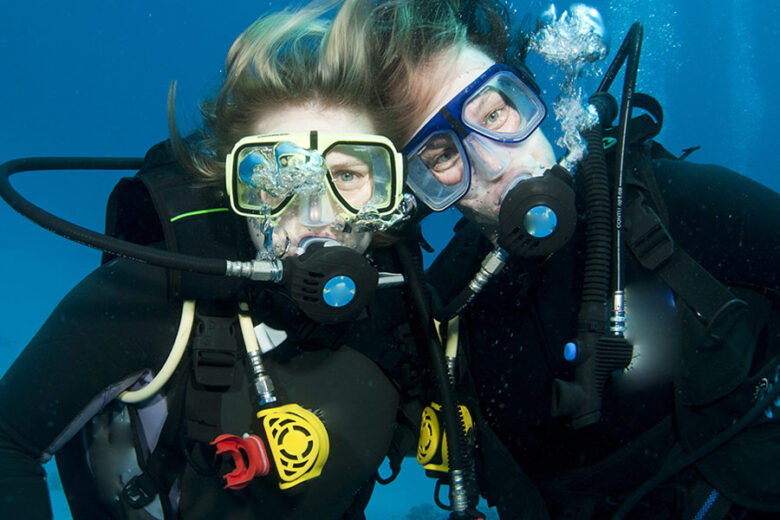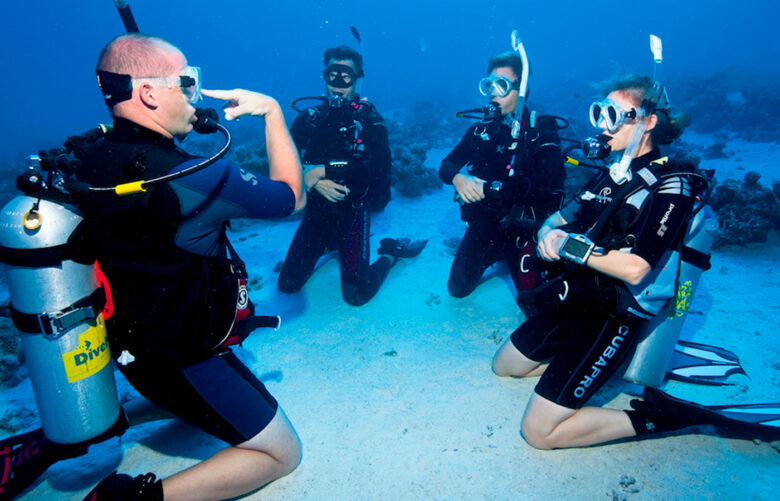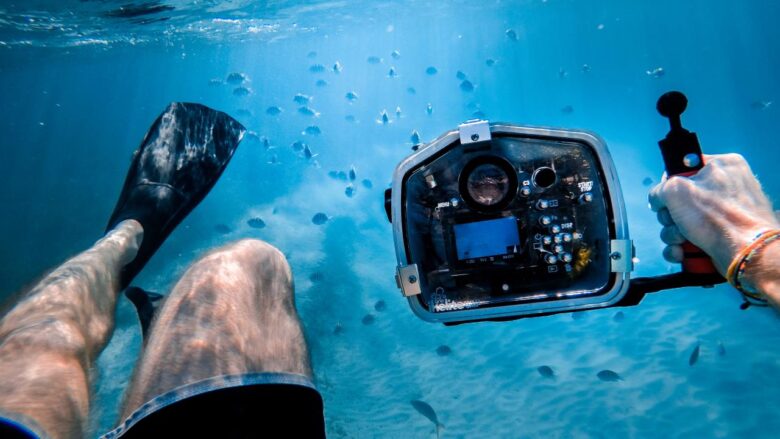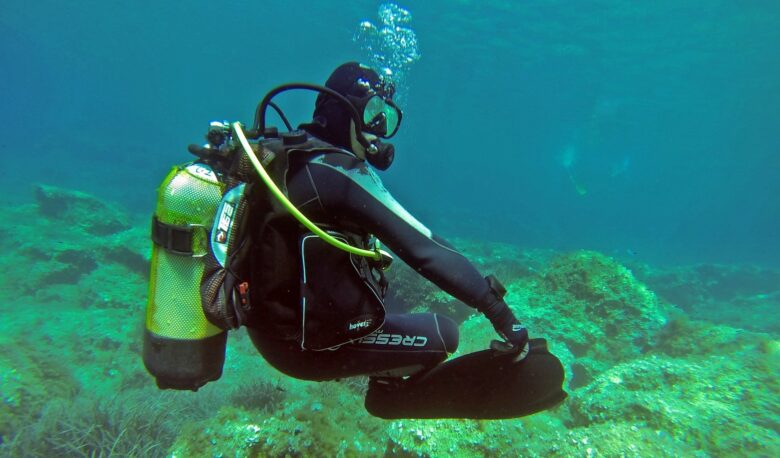Are you planning to go on an underwater adventure? Or are you a seasoned diver who wants to upgrade your diver gear? Whichever category you fall into, I’ve got you covered. In this blog post, I’ll take you through the ten essential pieces of equipment every underwater adventurer should have in their dive bag.
Contents
Wetsuit
The first item on our list is the wetsuit! This equipment keeps your body warm in cold waters and protects your skin from scratches or bruises when swimming through corals. It also increases buoyancy which allows for more effortless movement underwater. When shopping for a wetsuit, ensures it’s comfortable, fits well, and provides adequate insulation.
Regulator

Source: scuba.com
Next on our list is the regulator – an essential piece of diving equipment that helps regulate airflow from your tank while scuba diving. Ensuring this equipment is maintained well and working correctly before usage is critical, as a malfunction could lead to health issues or even fatalities.
Dive Computer
If there were ever one technology worth investing in, it would be a dive computer! A dive computer reminds divers about No Decompression limits (NDL) during dives, helping reduce risks involved with prolonged exposure at varying depths.
Mask and Snorkel

Source: squalodivers.com
When scuba diving, it’s necessary to have a mask as it helps divers see underwater and prevents water from flowing into their nose by creating an air pocket around their eyes/nose area, thus allowing them longer times exploring shipwrecks or observing small marine life forms like jellyfishes without feeling discomforted by salt or freshwater leaks while being able to breathe continuously using snorkels!
Fins
Investing in good fins can positively impact your diving experience – improving maneuverability (speed & direction), making descents/ascents smoother, and conserving energy reserves, especially on long-haul drives.
Dive Light
As you get deeper into the ocean, sunlight penetration decreases gradually, and with it, everything becomes darker. Investing in a good diving light helps illuminate your path, allowing for better vision of underwater flora and fauna without disturbing the natural habitat because most marine creatures hunt at night.
Underwater Camera

Source: escape.com.au
If you plan to capture memories from your underwater adventures, you’ll require an underwater camera! It’s essential to take pictures or record videos that are worthy of sharing with family and friends when showcasing where your journey took place.
Surface Marker Buoy (SMB)
An SMB is used for signaling boats on surface levels, indicating divers’ position submerged below – critical to avoid accidents caused by large yacht vessels!
Knife
While underwater, it’s necessary to have some means of protection in case something goes wrong or unexpected arises around sea plant life forms like seaweed enmeshments or other hazardous entanglements such as fishing lines tying up equipment that could potentially harm both the diver and other surrounding wildlife if not removed safely first!
Weight System

Source: dipndive.com
Last but not least is the weight system! This piece of diving gear allows proper ballasting assisting with dive-control within currents and ensuring safety by minimizing air consumption while imparting comfortability that comes from spending more time exploring whatever catches divers’ attention beneath them, whether alone or with groups.
Tips for Safe Scuba Diving
- Obtain proper training and certification: Before engaging in scuba diving, ensure that you receive proper training from a reputable dive organization. Obtain the necessary certification that matches your skill level.
- Dive with a buddy: Always dive with a buddy. This helps ensure mutual support and assistance in case of any problems or emergencies underwater.
- Plan your dives and dive your plan: Before each dive, create a detailed dive plan, including the depth, time, and route. Stick to the plan during the dive and communicate any changes with your buddy.
- Conduct pre-dive safety checks: Perform pre-dive safety checks on all your equipment, including your mask, regulator, BCD, and gauges. Verify that everything is functioning properly and is in good condition.
- Monitor your air supply: Keep a close eye on your air supply throughout the dive. Check your pressure gauge regularly and plan your dive to ensure you have enough air to safely ascend and complete your safety stops.
- Equalize your ears and sinuses: Properly equalize your ears and sinuses as you descend to avoid discomfort or potential injuries. Learn and practice proper equalization techniques.
- Ascend slowly and perform safety stops: Ascend slowly from every dive and make safety stops as recommended by dive tables or dive computers. This allows your body to eliminate excess nitrogen and reduce the risk of decompression sickness.
- Maintain proper buoyancy control: Practice good buoyancy control to avoid accidental contact with delicate marine life or damaging coral reefs. Proper buoyancy also helps conserve energy and air.
- Stay within your limits: Dive within your comfort zone and skill level. Avoid attempting dives that exceed your experience or training. Gradually increase your depth and difficulty level as you gain more experience.
- Be aware of your surroundings: Maintain situational awareness at all times. Stay alert to potential hazards, changes in conditions, and the location of your buddy and dive group.
- Follow dive site rules and guidelines: Respect the dive site rules and guidelines, including depth limits, no-touch zones, and marine life protection regulations. Be a responsible diver and protect the underwater environment.
- Properly maintain and service your equipment: Regularly service and maintain your scuba diving equipment to ensure it functions properly and safely. Follow the manufacturer’s recommendations for maintenance and storage.
- Dive with a reputable dive operator: If diving in unfamiliar locations, research and choose a reputable dive operator that adheres to safety standards and practices.
- Stay physically and mentally fit: Maintain good physical fitness and health to support safe diving. Avoid diving if you are fatigued, ill, or under the influence of drugs or alcohol.
- Be prepared for emergencies: Carry a signaling device, such as a whistle or surface marker buoy, to attract attention in case of an emergency. Familiarize yourself with emergency procedures and be prepared to respond calmly and effectively if needed.
In summary, having access to the items listed above will make your diving adventures more comfortable, safe, and enjoyable!! So now you know what equipment must be included in your diver gear set before heading out into unknown waters!
Ensure all apparatus is thoroughly checked before usage to ensure nothing goes wrong during an otherwise breathtaking enterprise beneath waves waking people up every day until nights transpire, leaving us uttermost refreshed mentally and physically. Go ahead, grab your diving equipment, and head out to explore the mysteries of the deep blue sea! And if I may add…while investing in any dive gear, don’t forget, dive Safe and have fun!
